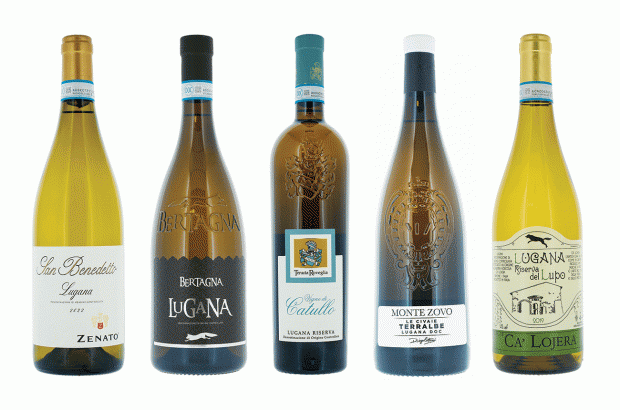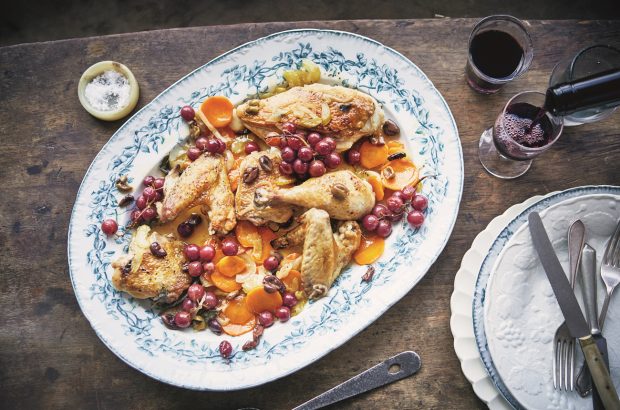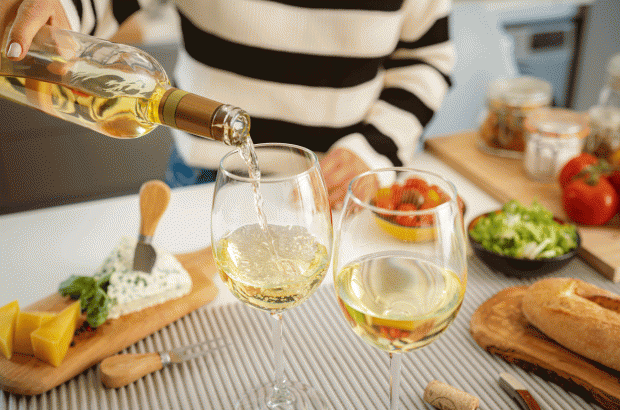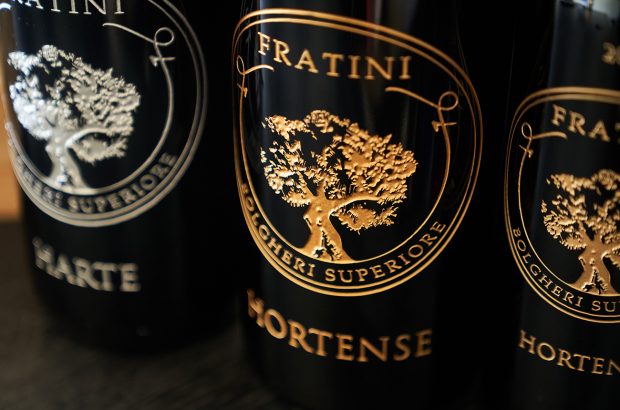- Early examples in Europe of a legally defined and protected wine production zone.
- Small, worthy but underdeveloped Tuscan wine zone.
- Carmignano vine area will increase in the next five years by nearly 50%.
- Dramatic overall improvement of quality in the area but question of tipicity.
- The conditions for excellent early ripening is the special feature of Carmignano.
Carmignano is one of Tuscany’s oldest recorded wine names, noted for quality since the first reference to it in the 14th century. Under the Medici in the 17th century the hills northeast of Florence where it is grown became one of the first examples in Europe of a legally defined and protected wine production zone. The first place in Italy to import Cabernet Sauvignon from France, again thanks to the Medici, Carmignano, in more recent times, was a precursor of the Super-Tuscan Sangiovese/Cabernet blend, and was 10 years ahead of Chianti in the official recognition of the use of the Bordeaux variety. In the 1970s its producers instituted a voluntary system of quality control tasting a decade before official tasting commissions were introduced nationally.
Yet despite being ahead of its time in all these respects, for a long period Carmignano somehow remained outside the mainstream of modern Tuscany.
A bastion of tradition, it escaped the commercialisation which impoverished Chianti in the 1970s, but was equally untouched by the frenetic events of the Tuscan wine renaissance; the arrival of high powered new owners, the investment, the charismatic consultant oenologists, the barriques and the exotic vini da tavola.
Producers in the area today are frank in admitting that while the world was getting excited about Tuscan wines in the 1980s, Carmignano languished in a state of relative obscurity. The reasons are various. Although a mere 20 kilometres from Florence, Carmignano is a surprisingly out of the way place. Compared to the touristy,
cosmopolitan bustle of Chianti Classico it is a rural backwater, with bumpy roads and strong indigenous accents. Then there is the question of size. Carmignano currently counts just over 100 hectares (ha) of vineyard and an annual output of under 300,000 bottles. There are 22 growers registered with the producers’ consortium, but until recently only a very limited number of these made and bottled their own wines. Nearly four-fifths of the DOCG vineyards are owned by the two largest estates, and although one of these is a major exporter with an impeccable reputation, this obviously limits the choice of labels available outside the immediate area. Add to this the patriarchal approach to winemaking of the majority of the smaller producers, and the picture of a small, worthy but under developed Tuscan wine zone is complete.
Change began gradually, following the passing of the DOCG in 1990 and has started to accelerate in the last couple of years. The president of the producers’ consortium, Giuseppe Poggi, estimates that the area under vine at Carmignano will increase in the next five years by nearly 50%. Replanting of old vineyards, already under way, will increase and, besides drawing on improved clones of Sangiovese, will reflect the current interest in Merlot and Syrah as complementary varieties. He also foresees a significant increase in the number of grower-bottlers, supported by specialised consultants. In part these developments are the result of new political support for wine growing in the area. In the early 1990s Carmignano passed from the administrative jurisdiction of Florence, under which it was a very small fish in a big pond, to that of the newly created province of Prato, becoming a potentially big, prestigious fish in a much smaller pond. The key players however, are the producers themselves.
Capezzana is the oldest and the largest estate of the DOCG. Quality producers with an international perspective, the Contini Bonacossi family have played a fundamental part in the development of the legislation, winemaking and promotion of the denomination. The first to reintroduce Cabernet Sauvignon, back in the 1960s, Capezzana currently has 50ha registered for Carmignano, with new vineyards coming on line soon. Consultant winemaker is Stefano Chioccioli, one of the hot shots of the new generation of Tuscan oenologists, while Federico Staderini advises on vineyard management. The Villa Capezzana Riserva remains the benchmark for the denomination, a concentrated wine which in good vintages needs eight to 10 years to unfold. The 1985 still has great colour and plenty of drive. The 1990 is starting to drink well, firm but intense on the nose, with bags of personality. The very good 1995 is tough and closed, but has great substance and potential. The family reckoned 1997 was going to be the best vintage of the last 20 years, until they saw what they had made in 1998.
Artimino was founded by the Medici and boasts an incredibly grand 16th century villa. With its 40ha of vineyard Artimino has an importance, in terms of size, comparable to Capezzana. The fattoria has been managed by the same family for four generations and owes its local reputation to very traditional riservas with long barrel ageing. There is no shortage of investment, the cellars are among the best equipped in the area and systematic replanting began in the early 1990s. The top wine is the serious, full bodied Villa Medicea Riserva.
Fattoria Ambra is one of the leading smaller estates. Manager Beppe Rigoli plants at a density of 6,000 vines per hectare (double the traditional number) uses discreet amounts of Merlot and Syrah and ages in French oak barrels. He also practices single vineyard selection. The standard Carmignano comes from Santa Cristina a Pilli. There are two riservas, Vigne Alte and the new and very interesting Vigna Elzana, which goes against all the trends with a blend that is almost 100% Sangiovese. Ambra wines, and in particular the riservas, are big and fleshy with lovely, complex fruit and very well handled oak.
Much in the same school is Enrico Pierazzuoli’s Le Farnete, another estate where consultant winemaker Stefano Chioccioli supervises production. Pierazzuoli says that the formula for turning out top quality Carmignano is simple; ripe grapes, adequate cellar equipment, careful use of the very best French barrels and bottle ageing before release. The main cost is the reduction of output to the equivalent of one bottle per vine. Farnete riservas combine attractive berry fruit with the extract, slower evolution and ageing potential of more traditional styles.
Trefiano is a small farm which was formerly part of the Capezzana estate. In 1994 it was taken over by Vittorio Contini Bonacossi in a bid to move away from the multiple commitments of his father’s estate and back to the land and the direct production of his own wine. With the drastic reduction of yields, a change in the system of vinification and the introduction of 350 litre Allier tonneaux, Vittorio aims for a style which combines finesse and complexity with soft, early drinking fruit. On the evidence of the 1995 his meticulously made wines are set to become one of the stars of the denomination.
Other small estates which are going to make a big impact are the Fattoria Il Poggiolo and the very impressive Podere Piaggia with its racy, all up-front fruit. The 1995 and 1997 riserva wines offer fruit, body and chic new oak.
There can be no question about the dramatic overall improvement of quality in the area, but hovering in the background there might be the question of tipicity. Carmignano has soils very similar to those of the central area of Chianti Classico. The Cabernet Sauvignon which once set it apart is now a common denominator of Chianti and innumerable IGTs. With the arrival of the same oenologists, the same winemaking and the same Allier barrels, is there a danger of homogenisation? ‘No,’ says Enrico Pierazzuoli: ‘The trend today in Tuscany is towards the identification of micro-zones, and Carmignano is the perfect example of a wine with a character strictly related to its place of origin.’
Fair enough, but what is the special character of Carmignano? ‘Elegance, balance, perhaps less power than other Tuscan reds, but great drinkability as well as potential for ageing,’ says Vittorio Contini Bonacossi. This interpretation is given credibility by a Florentine description quoted by Giacomo Tachis, dating from 1907: ‘Carmignano is softer than Rufina, not as well built as Chianti, but suave and round.’
The roundness can be explained by the fact that acidity levels at Carmignano are consistently lower than in Chianti. This is due to the conditions for excellent early ripening, which Ugo Contini Bonacoassi picks out as the special feature of Carmignano: vineyards sited on low, warm slopes open to the plain, but with the mountains near enough to bring down night temperatures and prevent drought. Sangiovese is picked two weeks earlier at Carmignano than in Chianti, and Cabernet gives fruit and fine tannins, without vegetal undertones. Interestingly, Canaiolo, the traditional (but much maligned) complementary variety of central Tuscany also ripens a treat in Carmignano and is still widely used to add softness and colour. The producers have just gained approval for the increase in the amount of Cabernet in the DOCG blend from 15 to 20%. One wonders, however, whether the key to the terroir of Carmignano might not be the growing conditions for the traditional Tuscan varieties rather than the flavours of the ubiquitous Cab?














